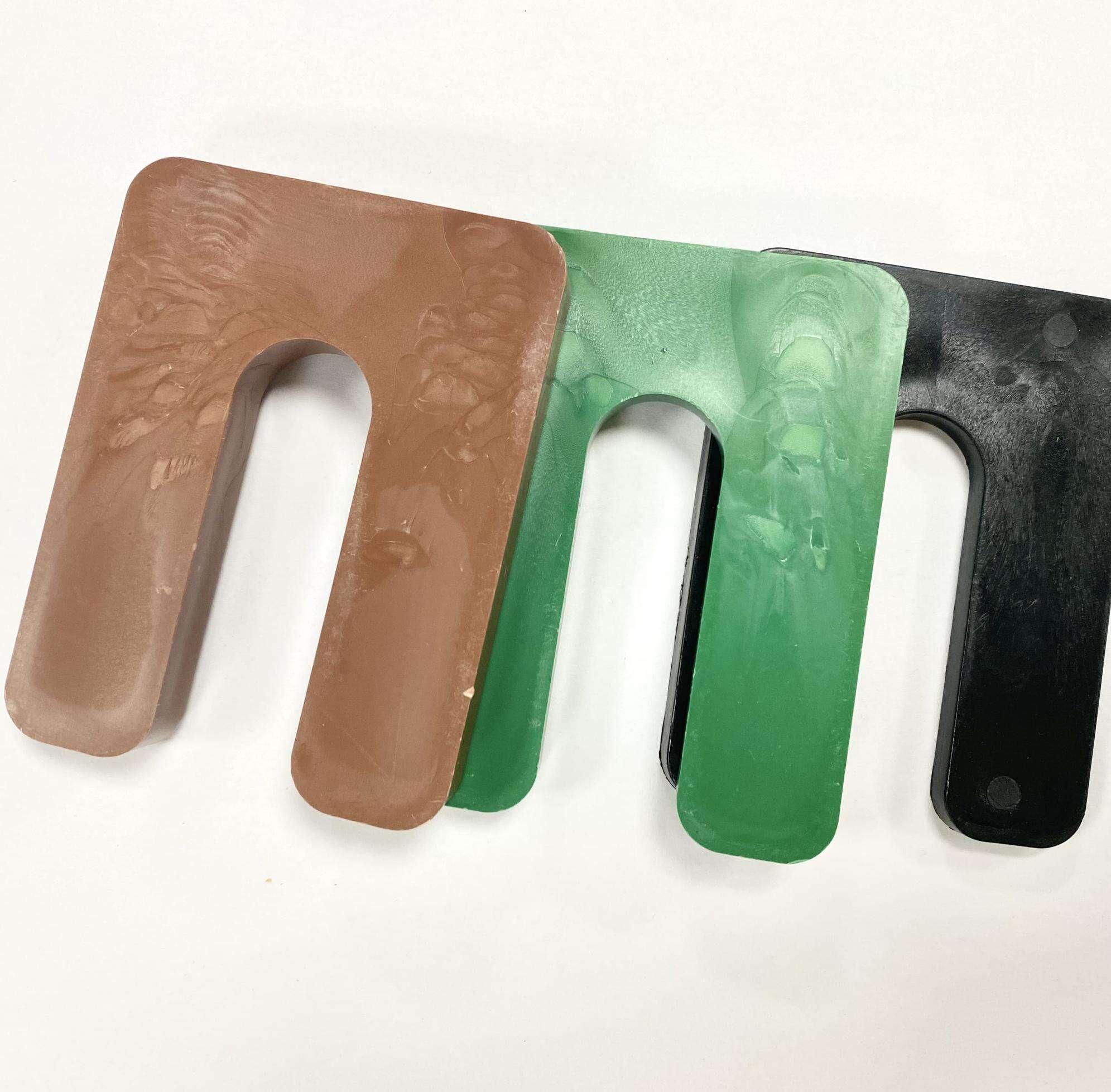Სახელმძღვანელო პრემიუმ ხარისხის მუხლის დაცვის შერჩევაზე
Სწორი არჩევანი მუხლის ბალიშები მართებული აქტივობის შესრულებისას საჭიროა სახსრების დატვირთვის შემთხვევაში. მიუხედავად იმისა, თქვენ არით სპორტსმენი, მშენებელი თუ უბრალოდ ვინმე, ვინც დაკავებულია დამატებით აქტივობებით, სწორმა მუხლის დაცვამ შეიძლება განსაზღვროს კომფორტული შესრულება და შესაძლო დაზიანება შორის სხვაობა. საშენი იმაშია, რომ გაიგოთ, თუ რა ხდის მუხლის დაცვას ეფექტურს და როგორ აირჩიოთ ის, რაც შეესაბამება თქვენს კონკრეტულ საჭიროებებს.
Ხარისხიანი მუხლის დაფები ერგონომიულ დიზაინთან ერთად უზრუნველყოფს მათ მდგრადობას, რაც უზრუნველყოფს როგორც დაცვას, ასევე მობილურობას. დღესდღეობით ბაზარზე წარმოდგენილია მრავალი ვარიანტი, ძირეული ქსოვილის დამშვებლიდან დაწყებული მაღალტექნოლოგიური ჟელის სისტემებით დამთავრებული. ეს შესაძლებლობა დაგეხმარებათ არჩევანის პროცესში და მუხლის დაფების მოძებნაში, რომლებიც უზრუნველყოფს ოპტიმალურ კომფორტს და მხარდაჭერას.
Მუხლის დაფების მასალებისა და კონსტრუქციის გაგება
Ძირეული დამცავი მასალები
Ნებისმიერი მუხლის დაფის სერდცე მის დამცავ ძირში მდებარეობს. ტრადიციული ქსოვილის დამშვებლები ძირეულ დამშვებას უზრუნველყოფს, მაგრამ დროთა განმავლობაში შეიძლება შეიკუმშოს. თანამედროვე მუხლის დაფები ხშირად იყენებს EVA ქსოვილს ან მეხსიერების ქსოვილს, რომელიც ინარჩუნებს მის ფორმას და ასევე უზრუნველყოფს უმაღლეს ხარისხის შეჯახების შთანთქმას. ჟელის ჩასადებები წარმოადგენს პრემიუმ ვარიანტს, რომელიც უზრუნველყოფს მუდმივ დამშვებას და წნევის განაწილებას მთელ მუხლზე.
Პირველკლასიან მუხლის დაცვებში გამოიყენება სხვადასხვა სიმკვრივის მასალების რამდენიმე ფენა. ასეთი მრავალფენიანი კონსტრუქცია უზრუნველყოფს როგორც შეჯახების შთანთქმას, ასევე კომფორტს: მყარი გარე ფენები უზრუნველყოფს დაცვას, ხოლო მაღალი კომფორტის მქონე softer შიდა მასალა კომფორტს უზრუნველყოფს კანის წინააღმდეგ. ზოგიერთი წარმოებელი გამოიყენებს სპეციალურ შეჯახების წინააღმდეგ კომპოზიტებს, რომლებიც დარტყმის დროს მყარდება, მაგრამ ჩვეულებრივი გამოყენების დროს რევებადი რჩება.
Გარე სვეტის დიზაინი
Მუხლის დამცავის გარე შრე მნიშვნელოვან როლს ასრულებს მისი მაღალი ხანგრძლივობისა და დამცავი ფუნქციის უზრუნველყოფაში. მყარი კორპუსის მქონე მოდელები, ჩვეულებრივ, გამოიყენებენ ხარისხიან პლასტმასს ან ამაგრებულ პოლიმერებს, რაც უზრუნველყოფს მაქსიმალურ დამცავ ეფექტს პირდაპირი შეჯახებებისა და წავლის წინააღმდეგ. ეს საუკეთესო ვარიანტია მშენებლობისთვის ან იმ საქმიანობებისთვის, რომლებიც დაკავშირებულია ხშირ კონტაქტთან მტკიცე ზედაპირებთან.
Მაღალი ხარისხის ნაყოფიერების ალტერნატივები უზრუნველყოფს უფრო მეტ მოქნილობას და ხშირად უპირატესობა ენიჭება სპორტულ აქტივობებში. ისინი იყენებენ მაგარ ნაკერზე დაფუძნებულ საფარს სტრატეგიულად გამაგრებული ზონებით. საუკეთესო დიზაინები ითვალისწინებს ცეკვად მდგრად მასალებს, როგორიცაა ბალისტიკური ნაილონი ან Cordura-ს ნაკერი, რათა უზრუნველყოფოს გამძლეობა კომფორტის შენარჩუნებით.
Მორგება და ზომების გათვალისწინება
Გაზომვის მითითებები
Სწორი ზომის შერჩევა ზუსტი გაზომვით იწყება. თქვენთვის იდეალური შესაბამისობის პოვნისთვის, გაზომეთ ფეხის წრეწირი რბილის ზემოთ და ქვემოთ დგომის დროს. ეს გაზომვები უნდა შესრულდეს დაახლოებით 4 ინჩით რბილის ცენტრის ზემოთ და ქვემოთ. გაითვალისწინეთ, რომ რბილის დამცავები უნდა იყოს მჭიდროდ მორგებული, მაგრამ არა შეზღუდული, რათა უზრუნველყოფოს ბუნებრივი მოძრაობა და დამაგრებული მდგომარეობა.
Ბევრი მწარმოებელი სათანადოდ აწვდის ზომების დეტალურ ცხრილებს, თუმცა მნიშვნელოვანია გაითვალისწინოთ, რომ ზომები შეიძლება განსხვავდებოდეს ბრენდების მიხედვით. ეჭვის შემთხვევაში განიხილეთ რამდენიმე ზომის შეკვეთა შედარების მიზნით, რათა იპოვოთ თქვენი საჭიროებებისთვის ოპტიმალური ფიტინგი. საუკეთესო მუხლის დამცავები უნდა უზრუნველყოთ მოძრაობის სრული დიაპაზონით, ხოლო მოძრაობის განმავლობაში მუდმივად უნდა ეხებოდეს თქვენს მუხლს.
Ჩამოსხმის სისტემები
Ხარისხიან მუხლის დამცავებზე არის მდგრადი ჩამოსხმის სისტემები, რომლებიც ხელს უწყობს ინდივიდუალური ფიტინგის მიღწევას. მიაქციეთ ყურადღება მოდელებს რამდენიმე რეზინით – ჩვეულებრივ, ერთი მუხლის ზემოთ და ერთი მუხლის ქვემოთ. ეს რეზინები უნდა იყოს საკმარისად განიერი, რათა თანაბრად გაანაწილოს წნევა და თავიდან აიცილოს შებმა ან დაჭიმვა გაგრძელებული ტარების დროს.
Გაუმჯობესებული კონსტრუქციები შეიძლება შეიცავდეს ელასტიურ ნახევარქაფებს ან კომპრესიულ კომპონენტებს, რომლებიც დახმარება პადების ადგილზე შესანარჩუნებლად. ზოგიერთ მოდელზე არის სწრაფი გათავისუფლების ყოვითები ან ჰაკ-ენდ-ლუპის დახურვებები, რაც ამარტივებს პადების ჩაცმას და მოხსნას, მაღალი ფიქსაციის შენარჩუნებით. იდეალური სისტემა უნდა უზრუნველყოს სწრაფი გასწორება, თუნდაც ხელთატიერების ჩაცმის დროს.
Საქმიანობის სპეციფიკური მოთხოვნები
Პროფესიონალური გამოყენება
Პროფესიონალური გამოყენება მოითხოვს მუხლის პადებს, რომლებიც გამძლეა რთულ პირობებში მუდმივი გამოყენებისას. მშენებლებსა და სპეციალისტებს სჭირდებათ მუხლის პადები მაღალი დაცვით და შეჭრის წინააღმდეგობით. ისინი უნდა იყოს დამაგრებული ნაკერებით დატვირთულ ზონებში და შეუძლიათ გაამაგრონ მასალების დეგრადაციის წინააღმდეგობა, როგორიცაა ბეტონის მტვრის ან ქიმიკატების გამოყენება.
Პროფესიონალური დონის მუხლის დაცვები ხშირად იკრიბავს დამატებით თვისებებს, როგორიცაა გვერდითი დაცვა, რათა გაუმჯობინოს დაცვის მაქსიმალურობა ვარდისებურ სივრცეებში მუშაობისას. ზოგიერთ მოდელს შეიძლება ჰქონდეს კონკრეტული სერთიფიკაციები სამუშაო ადგილის უსაფრთხოების სტანდარტებისთვის, რათა დარწმუნდეს, რომ ისინი აკმაყოფილებენ ან აღემატებიან საჭირო დაცვის დონეს კონკრეტული ინდუსტრიებისთვის.
Სპორტული rezultatebi
Სპორტსმენებს სჭირდებათ მუხლის დაცვები, რომლებიც მობილურობას აძლევენ უპირატესობას დაცვის შენარჩუნებით. სპორტის სპეციფიკური დიზაინები ხშირად ასახავს ანატომიურად მორგებულ ფორმებს, რომლებიც შეესაბამება სხეულის ბუნებრივ მოძრაობის ნიმუშებს. მაგალითად, ვოლეიболის მოთამაშეებს სარგებლობს მუხლის დაცვები დამატებითი დაბლოკვით იმ წერტილში, სადაც ხდება impact-ი (შეჯახება), ხოლო მიუხედავად იმისა, რომ ისინი შეინარჩუნებენ თხელ პროფილს სწრაფი მოძრაობებისთვის.
Ტენის მართვა განსაკუთრებით მნიშვნელოვან ხდება სპორტულ აპლიკაციებში. მოძებნეთ მუხლის დაცვები გამტარი მასალებით და ტენის გამაშრობი თვისებებით, რათა თავიდან აიცილოთ ხელსაყრელობა ინტენსიური აქტივობის დროს. ზოგიერთი განვითარებული დიზაინი იკრიბავს ანტიმიკრობულ დამუშავებებს, რათა კონტროლი მოახდინოს სუნის წინააღმდეგ და შეინარჩუნოს სიმშვიდე რამდენიმე სწავლების მანძილზე.
Შენარჩუნება და ხანგრძლივობა
Გაწმენდის პროცედურები
Რეგულარული მოვლა მნიშვნელოვნად გაახანგრძლივებს მუხლის დაცვის სიცოცხლის ხანგრძლივობას. უმეტეს შემთხვევაში ქსოვილის ნაწილები შეიძლება ხელით გაირეცხოს მსუბუქი სარეცხი საშუალებით, ხოლო მყარი საფარის გასუფთავება შეიძლება მოითხოვდეს სპეციალური საშუალებების გამოყენებას. ყოველთვის შეამოწმეთ წარმოებლის მითითებები კონკრეტული მოვლის ინსტრუქციებისთვის, რადგან ზოგიერთ მასალას შეიძლება სპეციალური დამუშავება სჭირდებოდეს.
Გასუფთავების შემდეგ, სწორი გამშრავი მნიშვნელოვანია მასალის დეგრადაციის და სუნის პრობლემების თავიდან ასაცილებლად. პირდაპირი სითბოს წყაროებისგან შორს ჰაერში გამშრავა ჩვეულებრივ იძლევა საუკეთესო შედეგს. ზოგიერთ მუხლის დაცვას აქვს ამოღებადი დამშრალი საფარი, რომელიც ცალ-ცალკე შეიძლება გაირეცხოს, რაც მოვლას უფრო მარტივს ხდის.
Გამძლეობის ფაქტორები
Მუხის დაცვის სიცოცხლის ხანგრძლივობა დიდ ხნით დამოკიდებულია მის დამზადების ხარისხზე და გამოყენების შაბლონზე. მიაქციეთ ყურადღება ძლიერი შეკერვას ძირეულ ძალოვან წერტილებში და ხარისხიან მასალებს, რომლებიც წინააღმდეგობას უწევს ცვეთას. რეგულარული შემოწმება შემჭიდროვების, მიმაგრებელი ელემენტების და დამშრალი საფრის შესახებ შეიძლება დაგეხმაროთ პოტენციური პრობლემების დროულად გამოვლენაში, სანამ ისინი შეამცირებენ მუშაობის ხარისხს.
Თუ საკვების დროს ხშირად იყენებთ მუხლის დაცვებს, განიხილეთ რამდენიმე წყვილის ჩართვა. ეს საშუალებას აძლევს თითოეულ წყვილს სრულად გაიშროს გამოყენებებს შორის და მნიშვნელოვნად გააგრძელოს მათი სამსახურის ვადა. შეინახეთ ნაგვის ნაწილები, როგორიცაა შეცვლის ремни ან დამატებითი დაფარვა, თუ თქვენი არჩეული მოდელი სთავაზობს ასეთ ვარიანტებს.
Ხშირად დასმული კითხვები
Რამდენი ხანში უნდა შეიცვალოს მუხლის დაცვები?
Მუხლის დაცვები უნდა შეიცვალოთ მაშინ, როდესაც შეამჩნევთ მნიშვნელოვან wear ხასიათს, დაბალ ეფექტურობას დამატებითი დაფარვის შემცირებას ან დაზიანებულ რემნებს. რეგულარული პროფესიონალური გამოყენების შემთხვევაში ეს შეიძლება ნიშნავდეს ყოველ 6-12 თვეში, ხოლო იშვი მომხმარებლებს შეიძლება რამდენიმე წლის გამოყენება ჰქონდეთ ხარისხიანი მუხლის დაცვებით.
Შეიძლება თუ არა მუხლის დაცვების ტარება ტანსაცმელზე?
Უმეტესობა მუხლის დაცვების შექმნილია ისე, რომ იქნებინ პირდაპირ კანზე ან თხელ ტანსაცმელზე. თუმცა, ზოგიერთი მოდელი კონკრეტულად გათვალისწინებულია სამუშაო დანამორებზე ან სპორტულ აღჭურვილობაზე ტარება. იხილეთ წარმოებლის რეკომენდაციები იდეალური ტარების პირობებისთვის.
Რომელი თვისებები უნდა გამოვყოთ მთელი დღის კომფორტისთვის?
Გასაგრძელებელი ტარებისთვის უპირატესობა მიანიჭეთ სასუნთქ მასალებს, შესაბამის წონის განაწილებას და გამოსწორებად რემებს, რომლებიც არ შეუშლით ხელს და არ იწვევს შეშუპებას. ჟელის დამშვიდებელი ამუშავება ხშირად უზრუნველყოფს უკეთეს კომფორტს გრძელვადიან ტარებისთვის, ვიდრე საფუძვლიანი ქსოვილი, ხოლო სითბოს გამტარობის თვისებები მნიშვნელოვანი ხდება მთელდღიური გამოყენების დროს.


